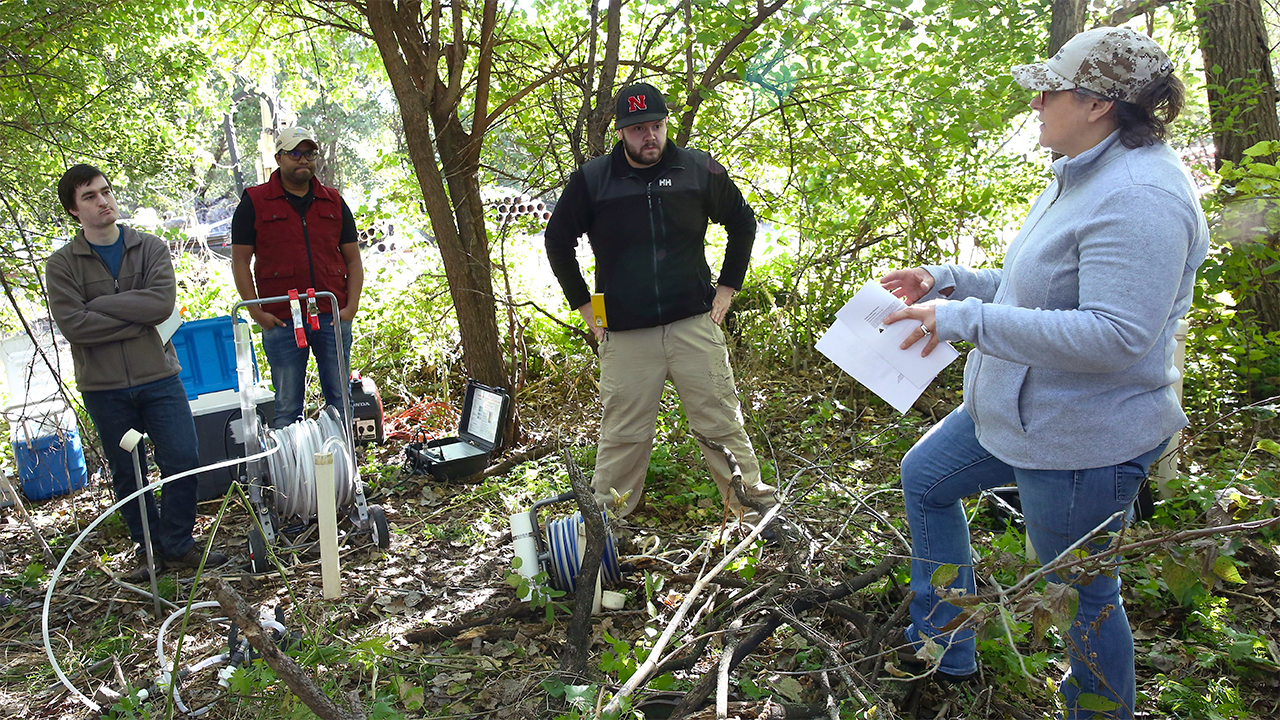
by Scott Schrage | University Communication and Marketing
Experiment reinforces link between contaminants
Eight years ago, the data was sound but only suggestive, the evidence strong but circumstantial.
Now, the University of Nebraska–Lincoln’s Karrie Weber and colleagues have experimentally confirmed that nitrate, a compound common in fertilizers and animal waste, can help transport naturally occurring uranium from the underground to groundwater.
The new research backs a 2015 Weber-led study showing that aquifers contaminated with high levels of nitrate — including the High Plains Aquifer residing beneath Nebraska — contain uranium concentrations far exceeding a threshold set by the Environmental Protection Agency. Uranium concentrations above that EPA threshold have been shown to cause kidney damage in humans, especially when regularly consumed via drinking water.
“Most Nebraskans do rely on groundwater as drinking water,” said Weber, associate professor in the School of Biological Sciences and Department of Earth and Atmospheric Sciences. “In Lincoln, we rely on it. A lot of rural communities, they’re relying on groundwater.
“So when you have high concentrations (of uranium), that becomes a potential concern.”
Research had already established that dissolved inorganic carbon could chemically detach traces of natural, non-radioactive uranium from underground sediment, ultimately priming it for transport into groundwater. But the 2015 study, which found that certain areas of the High Plains Aquifer contained uranium levels up to 89 times the EPA threshold, had convinced Weber that nitrate was contributing, too.
So, with the help of 12 colleagues, Weber set out to test the hypothesis. To do it, the team extracted two cylindrical cores of sediment — each roughly 2 inches wide and running 60 feet deep — from an aquifer site near Alda, Nebraska. That site not only contains natural traces of uranium, the researchers knew, but also allows groundwater to flow east into the adjacent Platte River.
Their goal? Recreate that flow in the samples of sediment, then determine whether adding some nitrate to the water would increase the amount of uranium that got carried away with it.
Read the full article and see more images at:
More details at: https://news.unl.edu/newsrooms/today/article/study-confirms-nitrate-can-draw-uranium-into-groundwater/